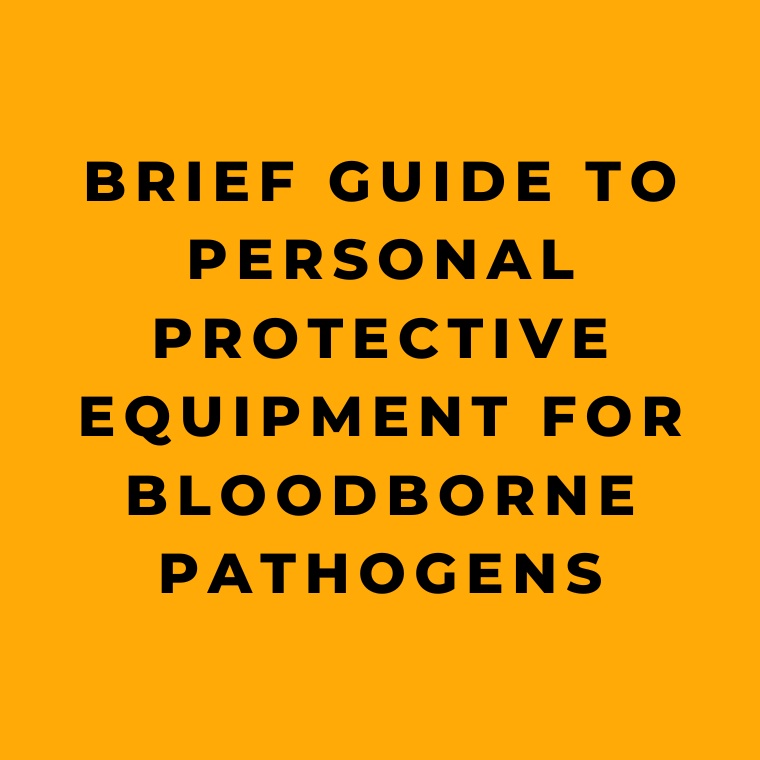OSHA’s Bloodborne Pathogens regulation (29 CFR 1910.1030) mandates that employers safeguard employees who may come into contact with blood or other potentially infectious materials (OPIM) in their line of work. In other words, this standard is designed to protect workers who might reasonably be exposed to blood or OPIM while performing their job duties.
Employers can defend their workforce against bloodborne pathogens, such as hepatitis B (HBV), hepatitis C (HCV), and human immunodeficiency virus (HIV), which leads to AIDS, by providing personal protective equipment (PPE) and ensuring its proper use. Donning appropriate PPE substantially reduces risk by serving as a barrier to exposure. Employers must supply, maintain, and replace PPE as necessary, free of charge to employees.
Choosing the Right Personal Protective Gear
PPE may encompass gloves, gowns, lab coats, face shields, masks, eye protection, pocket masks, and other protective attire. Selected PPE must be suitable for the task, meaning the level and type of protection must correspond to the anticipated exposure. For instance, a lab technician drawing blood might only require gloves, while a pathologist conducting an autopsy would need more extensive protective clothing due to varying exposure types and increased blood and OPIM contact. PPE must be easily accessible and available in proper sizes for workers.
If workers could reasonably be expected to have hand contact with blood, OPIM, or contaminated surfaces or objects, employers must ensure gloves are worn. Single-use gloves cannot be washed or decontaminated for reuse. Utility gloves may be decontaminated if their barrier efficacy remains uncompromised. They should be replaced if they exhibit signs of cracking, peeling, tearing, puncturing, or degradation. For workers allergic to standard gloves, non-latex gloves, glove liners, or powderless gloves must be provided.
Gloves are mandatory for all phlebotomies outside volunteer blood donation centers. If an employer at a volunteer blood donation center determines routine gloving for all phlebotomies is unnecessary, they must periodically re-evaluate the policy, make gloves accessible for workers who choose to use them, and avoid discouraging their use. Additionally, employers must ensure that workers in volunteer blood donation centers wear gloves when they have skin breaks, are in training, or believe hand contamination is possible.
Masks, combined with eye protection like goggles or glasses with solid side shields, or chin-length face shields, must be worn if blood or OPIM splashes, sprays, splatters, or droplets pose a threat to the eyes, nose, or mouth. Protective clothing, such as gowns, aprons, lab coats, and similar garments, offers body protection. Surgical caps, hoods, shoe covers, or boots are necessary when significant contamination is anticipated, like during orthopedic surgery or autopsies.
In HIV and HBV research labs and production facilities, workers must wear lab coats, gowns, smocks, uniforms, or other suitable protective clothing in work areas and animal rooms. Protective garments must not be worn outside work areas and must be decontaminated before laundering.
Cleaning and Disposing of Personal Protective Equipment
Employers must ensure that workers remove PPE before leaving the work area. If blood or OPIM penetrates a garment, it must be removed immediately or as soon as feasible. Removed PPE must be placed in a designated area or container for storage, washing, decontamination, or disposal. Furthermore, employers must ensure that workers wash their hands immediately or as soon as feasible after removing gloves or other PPE.
Additional Resources
For more details, visit OSHA’s Bloodborne Pathogens and Needlestick Prevention Safety and Health Topics web page at: https://www.osha.gov/bloodborne-pathogens.
References:










